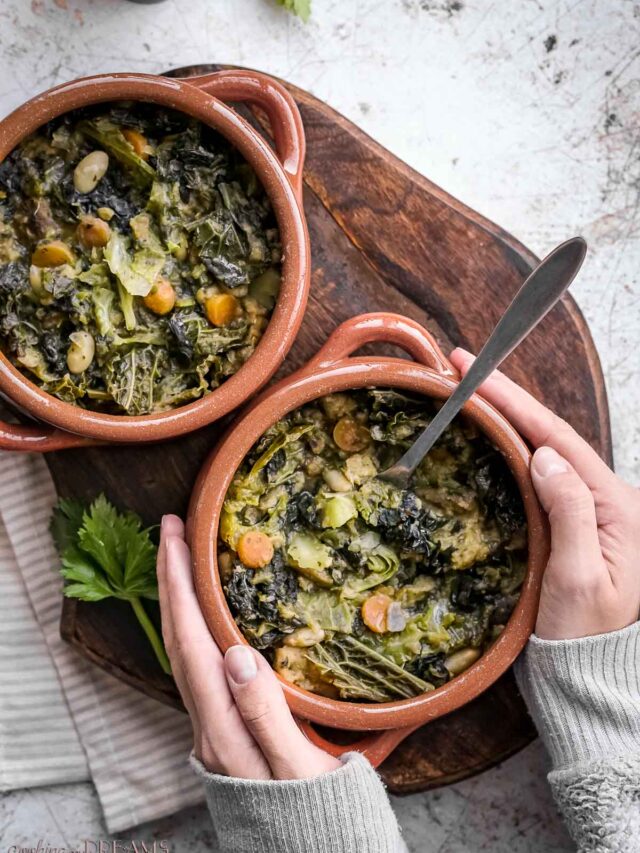Tuscan cuisine is renowned for its simplicity, depth of flavor, and use of humble ingredients. Among the many iconic dishes that hail from this region, soups hold a special place in the hearts of locals and food lovers alike. One of the most famous is ribollita, a hearty vegetable soup that has been a staple in Tuscany for centuries. But how did it come to be? And what makes it so beloved? This article explores the history of ribollita, its traditional recipe, and how modern variations have evolved to reflect contemporary tastes.
A Humble Beginning: The Origins of Ribollita

Like many traditional Italian dishes, ribollita has its roots in the medieval era. The name itself, which translates to "reboiled," hints at its origins as a way to repurpose leftovers. In a time when food was scarce and waste was not an option, peasants would take the remnants of their previous day's minestrone (a vegetable soup) and add stale bread to create a new meal. This practice not only reduced waste but also gave the soup a unique, hearty texture.
The dish was a practical solution to feeding large families on limited resources. Over time, it became more than just a means of survival; it evolved into a symbol of Tuscany's culinary heritage. Today, ribollita is still cherished for its comforting qualities and its ability to bring people together around the table.
The Traditional Recipe: A Taste of Tradition

One of the earliest recorded mentions of ribollita comes from Pellegrino Artusi, a 19th-century Italian chef whose cookbook Science in the Kitchen and Art of Eating Well remains a cornerstone of Italian gastronomy. In his book, he included a recipe for Zuppa Toscana di Magro alla Contadina, or Tuscan Lean Peasant Soup, which closely resembles the modern version of ribollita.
The traditional recipe includes a variety of vegetables such as black cabbage, beets, zucchini, carrots, and celery, along with cannellini beans and stale bread. The soup is cooked slowly, allowing the flavors to meld and the bread to absorb the rich broth. A final touch of olive oil and fresh herbs gives it a bright, aromatic finish.
Here’s a simplified version of the traditional recipe:
- Soak dried cannellini beans overnight.
- Cook the beans with garlic, bay leaf, and salt until tender.
- Sauté onions, garlic, carrots, celery, and zucchini in olive oil.
- Add tomatoes, black cabbage, and beets, then simmer.
- Stir in the cooked beans and bread, and let everything cook together.
- Finish with a drizzle of infused olive oil and a sprinkle of pepper.
This method ensures that every ingredient contributes to the overall richness of the dish, making it both satisfying and nourishing.
Modern Twists: How Tuscan Soups Have Evolved

While traditional ribollita remains a beloved classic, modern chefs and home cooks have put their own spin on the dish. One example is Tuscan Chicken Soup, a variation that blends the rustic spirit of Tuscany with a more indulgent, creamy profile. This version uses chicken broth, heavy cream, sun-dried tomatoes, and pasta, creating a comforting, hearty meal that’s perfect for fall evenings.
This modern take highlights the adaptability of Tuscan cuisine. While traditional soups like ribollita are often light and brothy, this version leans into richness and texture, using ingredients like Parmesan, spinach, and fennel seeds to add depth. It’s a testament to how regional dishes can evolve while still honoring their roots.
Variations and Substitutions: Making It Your Own

One of the great things about Tuscan soups is their flexibility. Whether you're looking for a vegan version or a meatier alternative, there are countless ways to customize these recipes. For example:
- Vegan Version: Replace heavy cream with coconut cream and use plant-based cheese for the topping.
- Sausage Version: Add crumbled sweet Italian sausage for a richer, more savory flavor.
- Tomatoey Version: Boost the tomato flavor by adding tomato paste and sundried tomatoes.
Additionally, substitutions can be made based on what's available. If you can't find cannellini beans, try using navy or northern beans instead. For the greens, kale works well, but spinach or chard can also be used.
Conclusion: The Enduring Legacy of Tuscan Soups
From its humble beginnings as a way to repurpose leftovers to its modern-day adaptations, Tuscan soup continues to capture the essence of Italian cooking. Whether it's the rustic charm of ribollita or the creamy comfort of Tuscan Chicken Soup, these dishes remind us of the power of simple, wholesome ingredients. As we enjoy these meals, we’re not just eating—they’re connecting us to a long tradition of resourcefulness, flavor, and community.